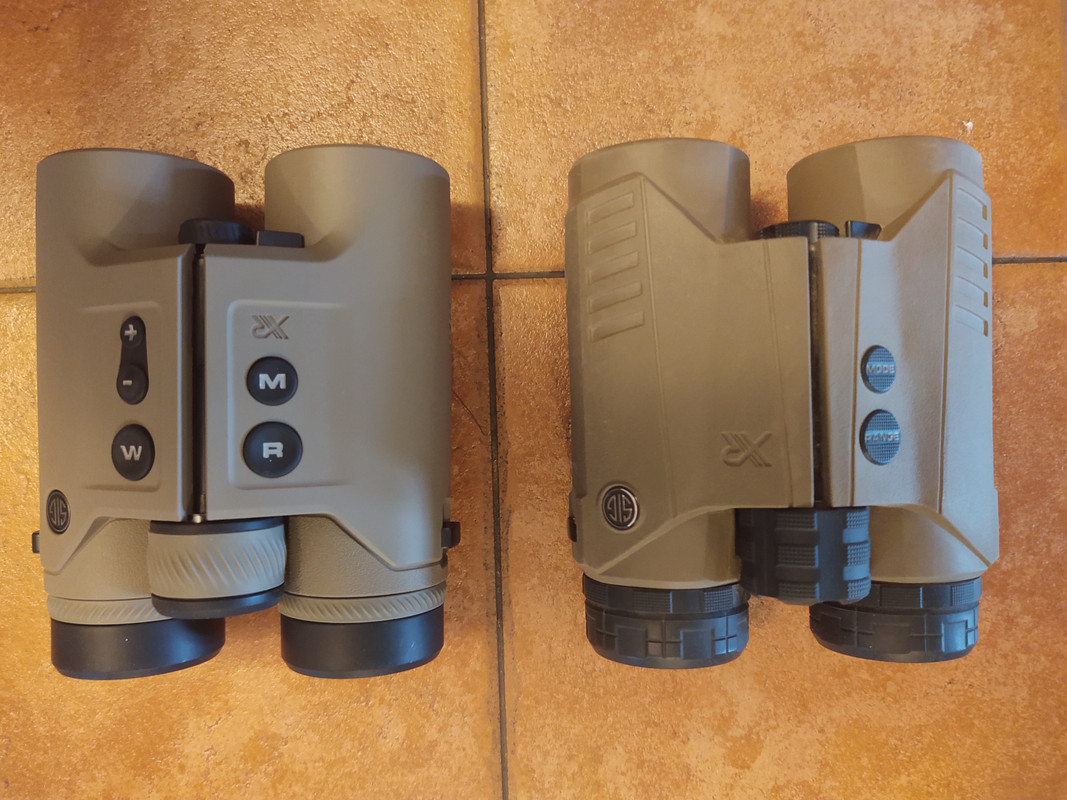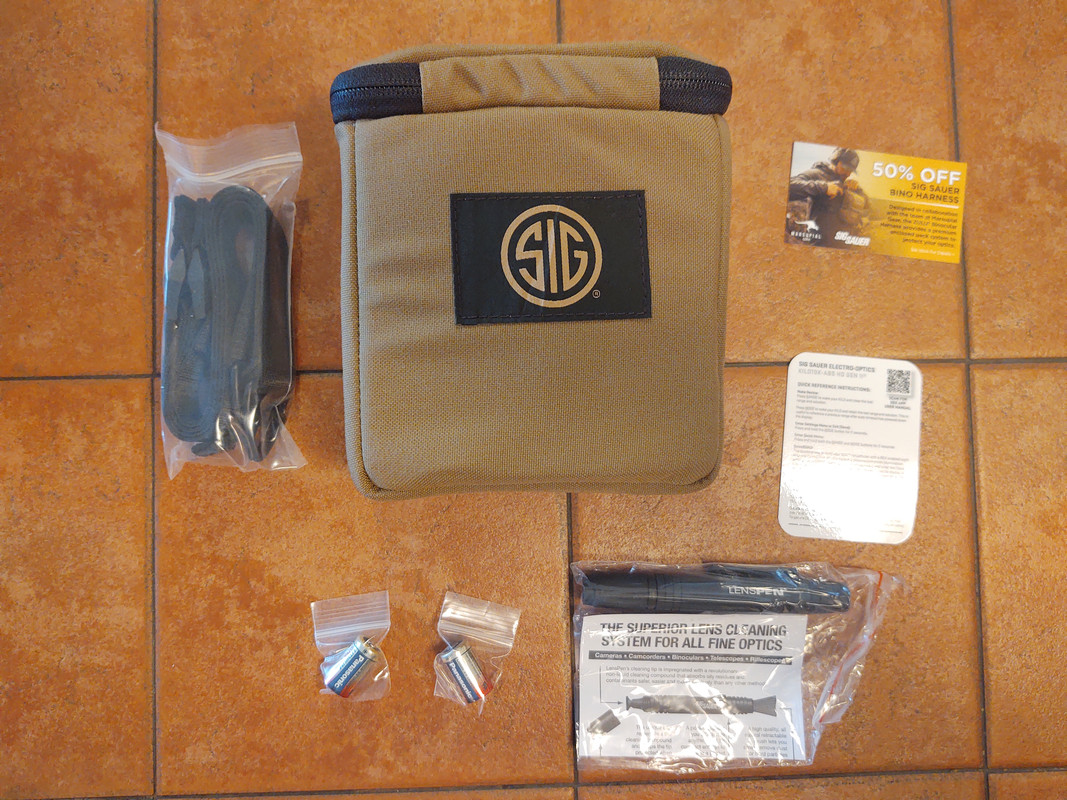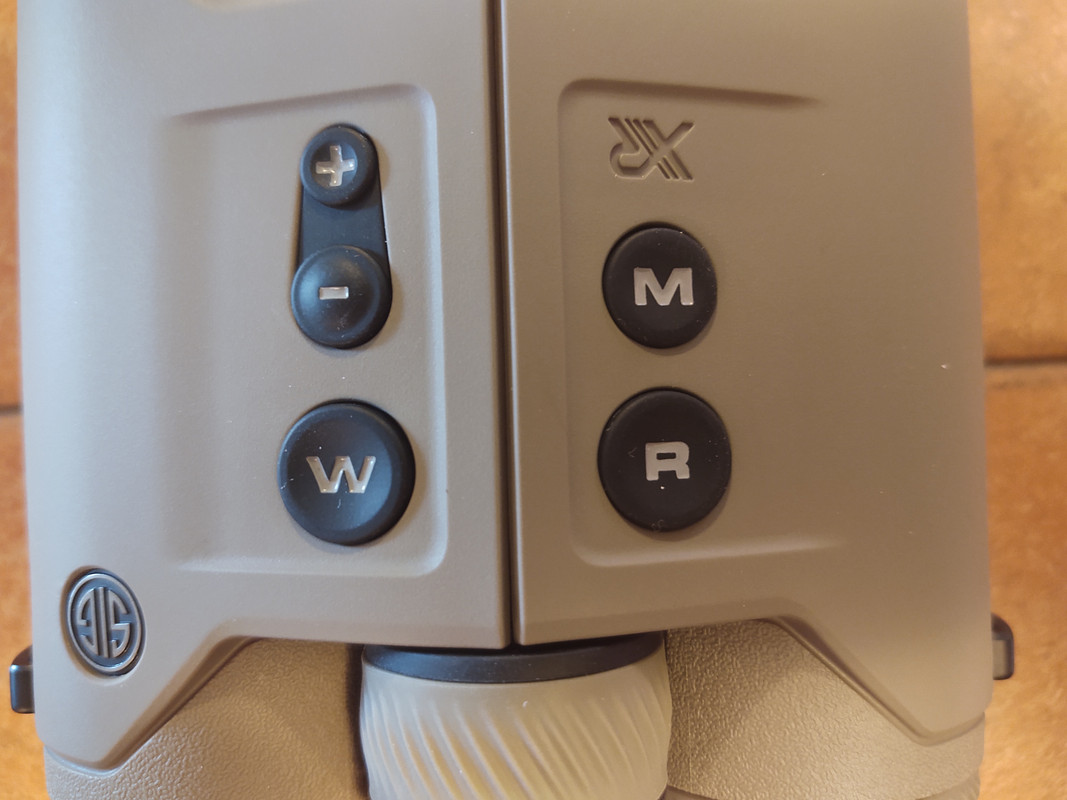Introduction
A few years back, Sig got into the nascent bino-rangefinder market with their first release, the Sig 3k. The goal of that project was to put out a bino with mid-tier glass (sort of Viper HD level glass), coupled with a killer rangefinder for a price more people could afford. At that time, if I remember correctly, I am not sure there were any other options, other than Leica, Swarovski, and maybe some other high end choices, most of which were firmly out of most people’s financial grasp. The 3k was solid. The optics were as expected and the ranging performance was the best I had personally used. A couple years later and Sig had the followup coming to market, the Kilo 10k. Boasting the new super amoled display that was also utilized in the 8k, it promised another level of ranging performance. In this, it did not disappoint. The ranging was fantastic, and the information access and configurability that the new display provided were excellent. You can read more in-depth information about that display in my 8k review posted HERE. However, an additional aspect it shared with the 8k was the color cast that came with the optics. In the 8k, while not optimal, it was not a performance issue, as the 8k is not a search and observation device, but strictly a ranging device and the cast did not get in the way. But in a binocular, something which did double duty as the primary tool for finding game in low light, it was a problem. Unfortunately, it was not a simple fix, but it was one Sig realized they had to undertake to solve. Which really was a shame, considering the 10k gen 1’s are otherwise really a fantastic bino RF system. Fast forward to this last year, and Sig was finally able to roll out the successor to the gen 1 10k’s, the 10k gen 2. The gen 2’s are not an entirely new product, that is, the changes are relatively few, but they are all significant. Top of the list is the aforementioned optics issue, but they also added additional buttons for direct wind speed/direction input, as well as making changes to the overall body design. I have had the gen 1’s for a couple years and a set of the gen 2’s for a few months, most significantly through hunting season, and what follows is my impressions on the changes and the package overall after knocking them around in Texas and Colorado this year.Whats in the box
The 10k comes in a pretty nice bag with connections on the back to allow it to be attached to molle equipped packs. Other than that, it has a carry strap, some batteries, a lens pen and a some basic startup instructions. Not a lot of stuff, but nothing you don’t need. The notable exclusion, however, are lens caps for either the front or the back. Personally, I would probably give up everything else, including the bag, for a solid set of lens caps.
Ranging
Having had the original 10k, I had a pretty good idea of what to expect from ranging on the gen 2 version, and I was not disappointed. In some regard, there is really not much to say here. Simply put, the 10k is easily the most powerful rangefinder I have personally tested, by a large margin. Of course, there are many I have not tried, but regardless, the results are impressive.
When testing, as usual, I ranged hillsides, animals (when available), trees and other landscape features. In other words, no street signs or other highly reflective targets ranged at night. I tested only during legal shooting hours, so 30 minutes before sunrise to 30 minutes after sunset. As usual, conditions had a significant effect on ranging capabilities, as did the nature of the targets. At the time of testing, I had a Sig 8k with me, as well as a Leica pro 8x42 in order to get some perspective on the 10k’s performance under the exact same conditions. In short, neither of them could keep up with the 10k. Under very bright conditions on trees, I could easily get beyond 3000 yards handheld. In many cases, braced, 4000 yards plus was possible. As the light went down, those numbers went up drastically, and the separation between the 10k and the other RF’s I had on hand got wider. Suffice it to say, when it comes to ranging, there are no questions about performance here. There is power, and power to spare.
Which does raise the question of what’s the point of all that power, does it really serve a purpose? The answer, at least for me, is yes, but not all of the utility is about shooting. Some certainly is. For example, as I mentioned, as the conditions or targets became less ideal (particularly when the light was extremely bright and hazy, or at angles which make things difficult for rangefinders), the 10k’s ceiling lowered, just as it did for my other rangefinders. Likewise, in snow and rain, the distance decreased markedly. However, when you have a ceiling as high as the 10k has, you are still able to range farther than some RF’s can in the best of conditions. So in poor conditions, you have a rangefinder that can still perform at an incredible level. Case in point, in testing in an absolute downpour, I was still able to range out to nearly a mile on trees. Basically, looking through the bino, if you could make out any texture at all on the tree through the rain, it would range it, and do so without false returns. The 10k has a very powerful laser and highly developed algorithms such that it delivered an amazing level of performance, even in very difficult weather conditions.
But other benefits to the power can be realized as well. In one case, I was able to locate a herd of elk in a distant field using my spotter. I could tell they were several miles off, but as I was in a new area, I was not able to tell where they actually were relative to our hunting area. I also couldn’t accurately tell how far they were, I just knew they were far. But because I was able to range an incredible distance with the 10k’s and because I had the compass heading turned on in the display settings, I was able to figure out exactly where they were….which ended up being well into the next unit deeply into private land. Had I fired up OnX, I could have dropped a pin using the RF/mapping integration, but I didn’t need to once I looked at the heading in the display and the distance. I knew where that was enough to know not to bother. Neither my 8k nor the Pro I had with me could range that far, not even close. Of course I could not range the elk at that distance, but the available landscape features were enough for the 10k to bounce of off for me to see that they were several miles away. My other two RF’s were not even close under those conditions.
So as I discussed in a previous review, that extra power not only helps in ensuring you get your range in bad conditions but, along with the mapping integration that many new RF’s have, it starts to leverage your RF as a navigation tool. It becomes a tool to help you to find downed game, figure out where points of interest are for future exploration, find your way back to a distant place where you may have seen potential game, or to evaluate just exactly how far that buck is and whether it is doable before the end of shooting light.
Lastly, one performance area that should also be considered is speed. That is, how fast does it range, how fast does it return a value and how fast can you re-range in case you miss, hit the wrong target, or want to verify. On all counts, as they always have been for me, the Sig is noticeably faster than anything else I have tested. Ranging is immediate, your solution is right now, and you can hit that button again and re-range immediately. It may sound trivial, but when you are trying to hit a target under pressure and it’s very small and you have missed, and you need to try again and then verify, it’s significant. And here, as with all the Sigs I have tried, the gen 2 excelled.

The 10k gen 2 has an updated body style that is a bit better ergonomically, but the form factor is the same compact size that started with the 3k. It retains the standard stud mounting point for tripod attachment, but updates the battery compartment with a built in thumb-tab to make in field battery changes easier
In summary, in terms of ranging, both of the 10k’s I have had have been absolutely amazing. I have nothing but praise for them in this area of performance, and I can’t imagine anyone being disappointed in them in this regard.





